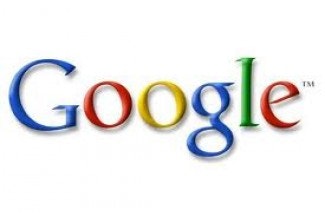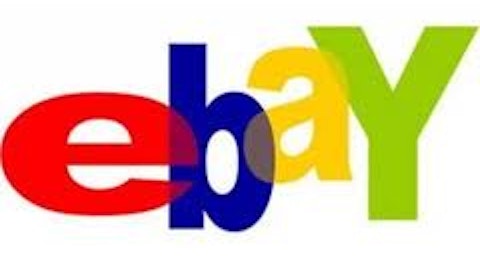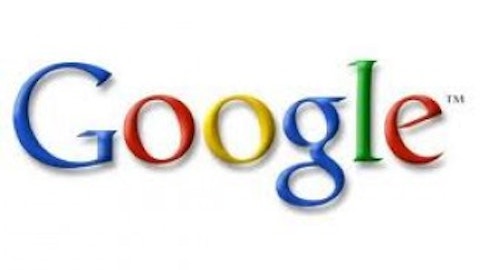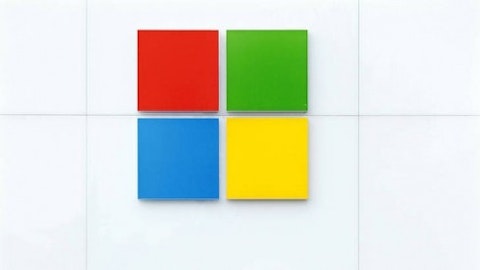In the months since Apple Inc. (NASDAQ: AAPL) stock price began falling two new companies have emerged as the tech industry’s leaders: Google Inc (NASDAQ:GOOG) and Amazon.com, Inc. (NASDAQ:AMZN).
The fact that Google Inc (NASDAQ:GOOG) is apparently readying a shipping service that will undercut Amazon’s Prime is a tell that these two companies know which car is beside them, and they’re acting accordingly.

Google Inc (NASDAQ:GOOG) practically invented the cloud – most of the innovations we know of as the cloud emerged from work Google Inc (NASDAQ:GOOG) was doing in the early part of the last decade to solve its own business problems. Later, Amazon.com commercialized the cloud as Amazon Web Services, and now has a dominant market share in the public cloud arena.
But seeing dominance through a single prism is a mug’s game. It’s subject to fashion, as Apple discovered. Once the fashions change, so does confidence. The fall comes hard and fast.
So which of these two companies is likely to crack first?
Amazon And The Top Line
Amazon’s story is all about top-line growth. The company deliberately avoids profit, believing that any money it does not reinvest in the business is an opportunity lost. Investors have rewarded it handsomely for this.
Back in 2009 Amazon had sales of about $24 million. In 2012 its sales were nearly 2 ½ times that, or $61 billion. The expectation is that this growth will continue. But as numbers get bigger they get harder to grow. Wal-Mart has grown its sales $60 billion since 2009, while Amazon is up “only” $36 million during that same time. But Wal-Mart’s sales gains mean it has grown only 11% on the top-line in four years. That’s the way of large numbers. This means that at some point Amazon.com is going to have to show a bottom line. Amazon grew its top line just as much in 2012 as 2011, but its growth rate went down, from 37% to 27%.
Amazon is also running a game with its cloud numbers. It doesn’t break them out. It just calls them “other,” and throws some more stuff in there too. Thus, people have to guess. And they tend to guess high, as Macquarie Capital does. Since cloud is technology, not retail, analysts assign a big multiple to it when calculating the company’s value. But they’re basing this calculation on a fiction, the idea that they know AWS’ numbers. They don’t.
So it’s easy to see Amazon.com falling for competitive reasons. There are more companies selling cloud services than ever before, and the numbers are getting too high to grow quickly. The stock is going to fall. How far it falls will depend on what Amazon does at that point, whether it’s willing to accept a profit or pay out a dividend.
Google And the Vultures
Google’s secret sauce is its cost structure. Google bought dark fiber when it was cheap, it uses less energy than other cloud players, it has data centers across the planet, and it caches copies of itself in many, many different places – at phone offices, at customer premises – so requests don’t always have to come back to the center.
This is why Google Inc (NASDAQ:GOOG) gives away so many services, and does all it can to encourage people to use all of the Internet’s free stuff. This maximizes its advantages.
But in becoming a verb, Google Inc (NASDAQ:GOOG) has put a target on its back. Governments around the world see Google as a pressure point, as an outsider they can tax, or one they can blame for their own failings. Google’s unofficial motto – “don’t be evil” – is something no company could completely live up to. Those Google has passed along its way, from Microsoft to the Bell companies, also have it in for the search engine giant, and are not averse to using the tools of government against it. Google, being young, also has a smaller patent portfolio than older companies.
Google has a way of not seeming to control its own technology. Android and Chrome are hugely successful hardware brands, but Google doesn’t own them; they’re open source, and thus Google doesn’t profit from them. In fact, Microsoft may make more money from Android phones than Google does, its lawyers having convinced phone makers it’s cheaper to pay it a per-unit “licensing fee” than fight it.
Google also tends to manage its money like a Silicon Valley company, like Apple. It sees money as time, time that in a trough it can invest to see to the next hill. It currently shows $48 billion on its books as cash, and may have much more stashed away overseas. This sounds great until it doesn’t sound great, and what happened to Apple can easily happen to Google, should its image be tarnished even a little.
One Fool’s Take
Both Amazon and Google are priced to perfection. Investors expect Amazon to grow its top-line unrealistically, and they expect Google to be able to maintain margins near 25% while it, too, grows its top-line at an ever-accelerating rate.
I own shares in Google, but sold my shares in Amazon when it was priced at $230, much lower than it is today. I would love to find a new entry point, but when Google went past $800 I lightened my holdings there.
Because both of these companies have such great long-term prospects, I don’t think I’m alone in waiting for an entry point, which is one reason they continue to fly above the cloud. So I’m growing increasingly cautious, having learned a lesson with Apple that adding to a position through losses can just lead to a losing position.
Both these companies attract considerable short interest. Short interest in Google peaked in November, with almost 2% of its outstanding shares held short. That’s nearly as short as investors currently are in Amazon, but short interest there peaked last May, when nearly 3% of shares were held short. Short interest is a contrary indicator – companies tend to rise against large short interests, unless the shorts are correct about the fundamentals.
Falling short interest tells me that buying opportunities are getting closer. At its current price of $276, Amazon stock costs you more than $2 for each $1 in sales. Even if you value AWS at $19 billion, as Macquarie does, and estimate cloud revenues of $4 billion, you’re still paying nearly $2 for each $1 in Amazon retail sales. A more reasonable figure, even with more revenue going to cloud, would be $1.50 for each $1 in sales, yielding a target price of $207.
Google’s current earnings multiple of nearly 26 is just as unsustainable. Take it down to its historic level of 20 and you get a target price of about $670, which also seems reasonable.
Will you be able to get in at either price without a disaster hitting either company? Look at what happened to Apple–its earnings multiple is now below 10. So you don’t have to have a fundamental change in business for this kind of collapse to happen – just a collapse in confidence.
I retain my confidence in both these companies, just not at these price levels.
The article Will Google Or Amazon Crack First? originally appeared on Fool.com and is written by Dana Blankenhorn.
Copyright © 1995 – 2013 The Motley Fool, LLC. All rights reserved. The Motley Fool has a disclosure policy.




